

Table of contents
- Mow the turf in the first year
- Fertilize turf in the first year
- Conventional synthetic mineral fertilizer (artificial fertilizer)
- Organic fertilizing
- Switching to organic fertilization
Complex ground preparation, not so complex but exciting laying - now the turf is there and wants be enjoyed, but in no case forget to take care of it in the first year, otherwise the enjoyment will soon fade End:
Mow the turf in the first year
In natural landscapes, grasses have developed into a widespread ground cover and are used as such in cultivated landscapes, because the plants in their entirety Growth habit (renewal buds close to the ground, protective leaf sheaths on the stalks, numerous partial inflorescences on particularly flexible stalks) are constantly being eaten away to become. A grass plant does not mind at all if its top part is constantly being removed, whether by sheep, cow or lawnmower.
Since every single stalk and every single plant has a micro-wise different growth rate, they develop Lawns that are neither eaten nor mowed, to green areas with plants of all different heights and Strengthen. The more often you bring the grass plants to the same height and thus also adjust the growth conditions for the individual plants (different growth increases, the plant with longer culms is also stronger and requires more nutrients than its weaker neighbour), the more evenly the individual grass plants become develop.
The optimal result of such efforts, by caring for and mowing each grass plant the same Providing growing conditions looks like an area of closely spaced 5cm culms and names "English lawn". In order to prevent different growth of the individual plants right from the start, a young lawn is used as much as possible mowed early, regardless of whether it is the young stalks of a sowing or a turf that is new on site lies.
When it comes to the question of when a turf should be mowed for the first time, and the sometimes contradictory answers to this question in the care instructions makes it particularly noticeable that the rolled turf is not quite a normal lawn is. Because the normal lawn should only grow for a few weeks or a few months before it charged, while in the case of turf it is promised that it will be walked on in a few days can.
It's also true, there is a strong lawn up to 1.5 years old, why shouldn't you walk on it? But the roots underneath are still busy growing - and if, on the one hand, one reads that the turf was good during the growth period of 14 days should be watered and if possible not walked on, but on the one hand it is recommended to mow it for the first time after a week at the latest, that seems to be the case contradict.
For “experts on the scene” and attentive observers there is no contradiction in these statements. What is meant is that the turf should be mowed for the first time when it has grown so far that the roots are already feeding off the ground. Because from this (of course very gradual) moment, the plant mass in the upper area also begins to grow, from then on the lawn should mowed as often as possible, because each mowing makes it more even and the pruning of the culm encourages growth and branching stimulates.
Therefore, the first mowing is done when a 4-5 cm long rolled turf is on average 6-7 cm high (or a 3-4 cm long rolled turf is on average 5-6 cm high; However, this is only conceivable with very fine turf qualities, because such a deep mowing almost scratches the root system in sports turf).
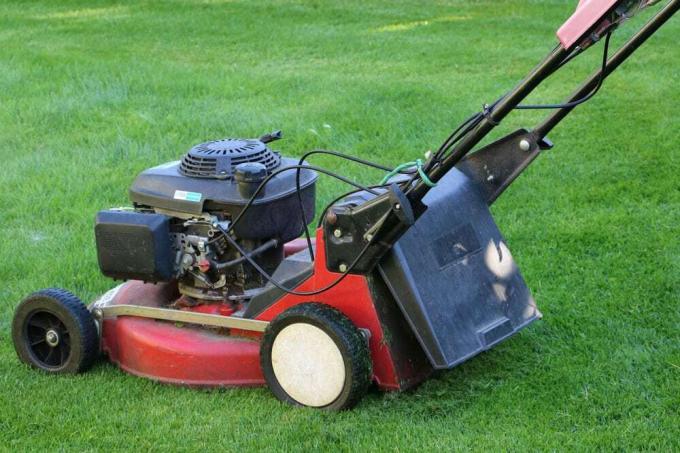
The lawn should not be watered for a day or two beforehand so that it is easier to walk on; and it would be a lot cheaper if the 45 kg offspring with the old but sharp and light hand lawn mower goes to work as if the head of the family, weighing 110 kg, has the heavy new mower inaugurates. During the first mowing (or whenever you have an area in mind that resembles an English lawn) should not be mowed more than 2 cm anyway.
Since hardly anyone can keep up with this, you can remember the following rule of thumb for mowing in the future: mow at least once a week, but do not take away more than a third of the height - if you wait longer and then mow too short to keep the distances to the next mowing, you run the risk that individual grass plants give up and no longer form new shoots, which can cause holes in the give lawn. The mowing is always too short if the mown lawn is noticeably lighter than the unmown one, so set the mower a little higher.
In the beginning, however, you should always only mow the really dry (dried) lawn; and always only mow when 2 – 3 cm have grown back. You should also not leave the grass clippings on the lawn in the early days, even if you have one bought a mulching mower and are planning to use the clippings as organic fertilizer on the lawn as part of organic fertilization leave. Because the lawn, which is eagerly watered to grow, is already at increased risk of fungi at this stage, which would be promoted by compaction with moist clippings. after approx. After about 14 days you can carefully walk on the turf more often, but it is only like this after about six weeks fully rooted that he represents a unit (and probably the first football game tolerates).
Tip:
If there are a lot of fungal spores flying through the air at the new location, it can be during/shortly after the intensive Irrigation, which is necessary in the early days for the roots to grow, for the development of brownish cap fungi come. This is not a defect, but normal in the right weather - the fungi will disappear if the watering is reduced to normal after the turf has grown.
Fertilize turf in the first year
Depending on how the course was laid during soil preparation, the rolled turf is fertilized as follows in the first year:
Conventional synthetic mineral fertilizer (artificial fertilizer)
If you fertilize conventionally, you have applied starter fertilizer and hopefully have the nutrient requirement determined by soil analysis before applying this starter fertilizer. In this case you know what to fertilize, maybe just not sure when the lawn should be fertilized for the first time. In the case of conventional fertilization, this ultimately depends on the supply from the supplier or depends on whether you ordered the turf pre-fertilized. In general, it is recommended to start fertilizing 4-6 weeks after the sod has grown (first mowing); Depending on the pre-fertilization, half or the full amount recommended in the soil analysis.
If you fertilize without soil analysis, you can follow the manufacturer's instructions/suggestions; the more the new location becomes noticeable, however, this type of fertilization becomes “fertilizing in blind flight”. What is recommended today less than ever: The quantities of liquid manure that are applied by agriculture already add enough to the groundwater; Sensible fertilization is always targeted fertilization, an important prerequisite for the long-term good growth of the turf.
If in doubt, you should do the soil analysis as soon as possible so that you can then treat the lawn with the recommended fertilizer. Soil analysis companies in the vicinity of your home town will be given to you by the environmental agency in your community or by searching the internet for “soil analysis” + “home town”. For the first year, use any fertilizer recommendations with caution as long as the lawn is growing well - a little effort will only make the lawn stronger.
You should also make sure later in the garden that is managed “conventionally”, i.e. using artificial fertilizers and pesticides, that the to have the next soil analysis made, because the fast-acting fertilizer is only rudimentarily tolerable for soil life as long as it does not over-fertilize becomes.
Organic fertilizing
If you want to have little work with your lawn, you should not endanger the soil life with mineral fertilizers, but feed them with organic fertilizers.

There are numerous arguments for organic fertilization, the most important of which are e.g. B. can be read in the article “Lawn care in spring – how to lime, fertilize and mow properly”; and there are comprehensive, fascinating treatises on the web on the whole subject, e.g. B. here: www.planet-wissen.de/natur/umwelt/lebendiger_boden/pwiebodenleben100.html.
Which is why the practical side should be dealt with here in particular: In a naturally well-kept garden floor, even this organic fertilization feeds millions of soil creatures per square meter, all your crucial gardening work for free complete. Which means, in reverse, that in an organically fertilized garden that has settled into a certain balance, you don't have much to do.
You can plant and sow without difficult soil preparation, only for particularly frugal or particularly hungry plants a little sand or a little nutrient may need to be added; and you should be careful not to reduce the diversity of soil life by planting the same plants in the same locations for years. Other than that, you still need to prune those plants that need regular pruning and figure out where in the garden the clippings will best rot; If the weather is much too dry, water some at some point (although a well-supplied soil with mulch or plant cover stores much more moisture than a "bare" one mineral fertilizer soil) and continuously add a colorful mixture of nutrients that is processed by the soil creatures (which also like a lot of household leftovers) - that's it, little work, a lot of garden.
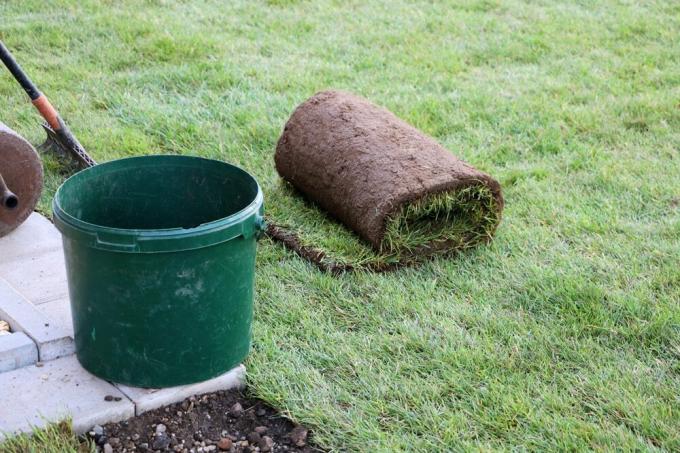
Looked at in this way, all gardeners appear "powdered with a staple bag" who constantly buy expensive mineral fertilizers that are laboriously distributed after you who have previously sent the soil for soil analysis with some effort, spend several afternoons a month shredding plant residues for disposal and and of course to combat all the plant diseases and pests (expensive and time-consuming) that regularly appear in "conventionally run gardens". set.
A garden is not immediately in ecological balance, but needs a little support to level off this balance of the gardener (in the casually overgrown perennial garden surprisingly little, in the ornamental and utility garden covered all around with useful plants more); and organic fertilization is only recommended for people who can tolerate at least some nature (including natural clutter) in their garden.
But what is conventional in the sense of traditional and natural about this "conventional garden tour" is just that as the seller in the nearest garden center will allow you if or because he realizes that he no longer sells here can.
Switching to organic fertilization
Since more and more people are becoming aware of this, natural gardening with organic fertilizers is experiencing a tremendous upswing. More and more people are therefore switching to organic fertilization, which again raises its own questions:
If you have already switched to organic fertilizer, but have laid a turf that has been pre-fertilized with mineral fertilizer, you can use compost when preparing the soil, just before Before laying, apply the supplied starter fertilizer (just the right amount) and 4-6 weeks after the lawn has grown organic-mineral fertilizer, i.e. mix both fertilizers first. In the future you will continue to reduce the amounts of mineral fertilizers in favor of long and slow-acting organic fertilizers; if the lawn threatens to slip into deficiencies in the meantime, plant-available liquid fertilizer from the trade or in the form of plant manure will help more quickly.
If the conversion to organic fertilization is to begin with the laying of the turf, you can basically proceed in the same way; the transition just takes a little longer. When it's done, you have to spend less and less time on fertilizing. A little more at first to spread organic lawn fertilizer from the trade; If you enjoy cycle fertilization, at some point the lawn will probably only be supplied with compost, shredded plant matter from the mulching mower and household waste.
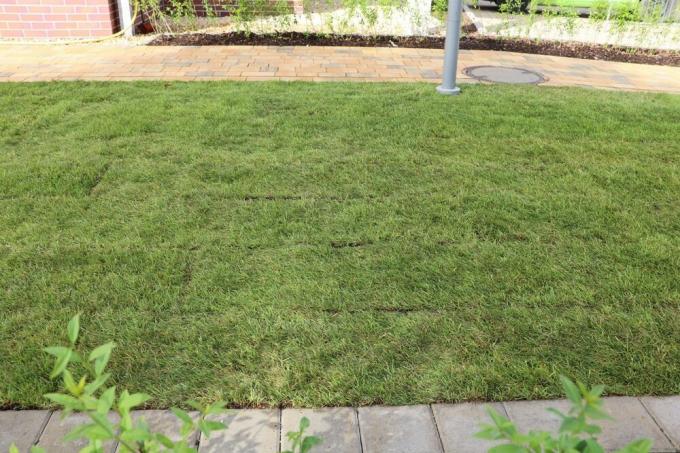
What is left over in the household contains many nutritious substances that can be fed to plants, find a compilation of "natural fertilizers to whet the appetite". you e.g. B. in the article "Fertilize geraniums perfectly - the best geranium fertilizers and household remedies". The list is long, from aquarium water (with potassium and nitrogen) to fireplace ash (rich in potassium and lime, iron and phosphate), from coffee grounds (the can replace a complete fertilizer) to baking soda (which corrects the pH value with moss in acidic lawn soil, making it difficult for the moss in the future has).
Of course, the list goes on in the garden: Substances such as plant meal (made from chopped plant residues) are used as fertilizer, which of course is added to the compost; Horse manure (which has been stored for at least a few months), horn shavings from the stables and manure from your own weeds (e.g. B. Nettles as fertilizer in fermented and highly diluted form, the fresh approach is one of the most important natural pesticides). Gardening also sometimes produces guano, one of the best organic fertilizers produced when birds defecate on limestone - guano is also created under the bird feeder that hangs over a limestone paving surface, it just has to sit on the compost for a while evaporate. And if all this should be scarce, organic liquid fertilizer helps (which is actually inside the Fertilizes potted plants, but also gives the lawn readily available nutrients when it is needed in between should).
Since organic fertilizers first have to be decomposed by soil organisms and the lawn with its dense network of roots better absorbs at least semi-decomposed manure, all these substances should first be added to the compost to be used with or. to fertilize the lawn over this (slightly raking in). Only the lawn clippings are allowed to rot immediately on the lawn if they have been chopped up appropriately by a lawn mower with a mulching function.
 garden editorial
garden editorial I write about everything that interests me in my garden.
Learn more about lawn types

garden without lawn | 15 alternatives to weed
A representative garden can do without a lawn. Imaginative ideas with ground cover, stone, sand, gravel or water inspire as creative alternatives to evergreen monotony. Lush naturalness reigns in the historic cottage garden. Get inspired by 5 alternatives to weed here.

Creating a herb lawn: 7 herbs that should be in the wild herb lawn
A herb lawn is a useful alternative to a normal grass lawn and is much easier to care for because it does not have to be mowed all the time. The herb meadow can be created by yourself and designed with the desired wild herbs as desired. Native plants that form beautiful flowers are ideal for this.

Have rolled turf laid - costs / prices with sample calculation
Buying rolled turf is easy, laying rolled turf is not so easy - in the article you will learn all the important facts about laying rolled turf.
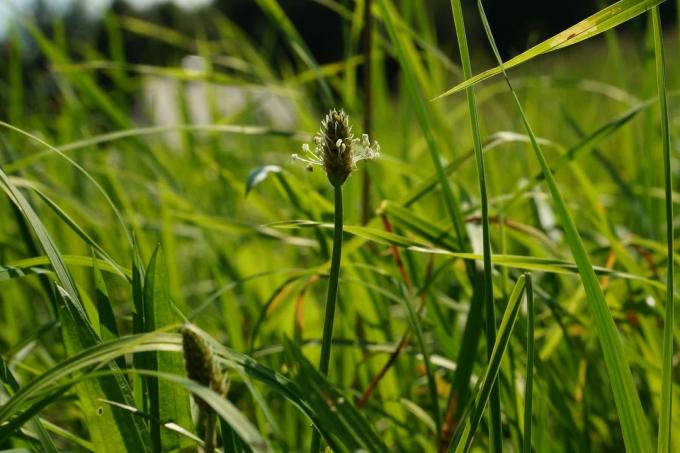
Create natural grass - grass that does not need to be mowed
Easy-care and colourful, this is natural grass that can easily be laid out in your own garden. A natural lawn does not have to be mowed, otherwise the many flowers and weeds would be destroyed and thus the natural habitat of many insects. So the natural grass is ideal for nature lovers who do not want to invest a lot of time in lawn care.

Create nutrient-poor grassland - sowing and care
As the name already impressively expresses, lean or dry grassland prefers nutrient-poor soils. This can usually be sandy soil, which also cannot store water for very long. The growth of this lawn is also very low, which in turn favors many wildflowers.
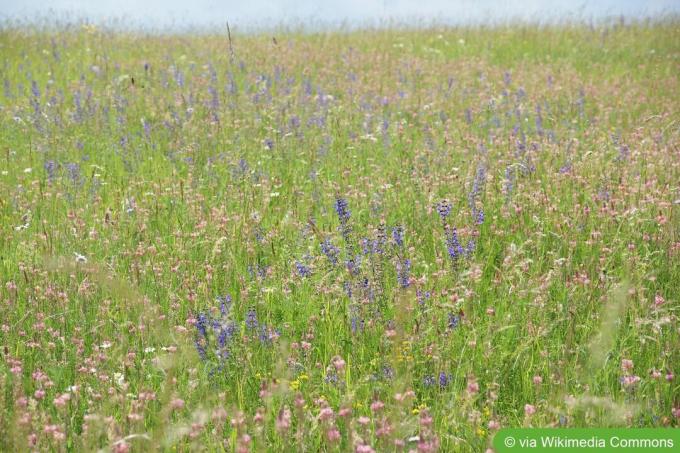
Create lean meadow and fat meadow and care tips
Meadows visually enhance natural gardens, at the same time they are a biotope for rare plant species. Poor and fat meadows are easy to cultivate, but there are a few things to consider when creating the area. Find out where you can enjoy the colorful variety of poor meadows and where rich meadows are more suitable.



